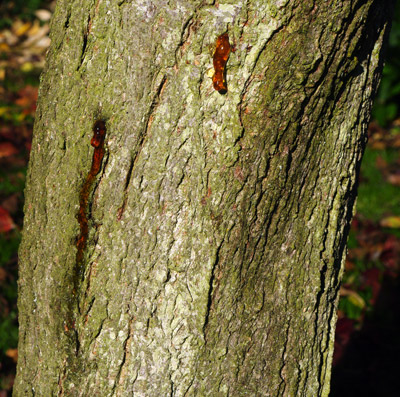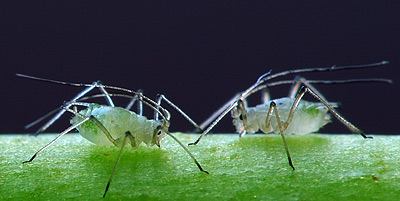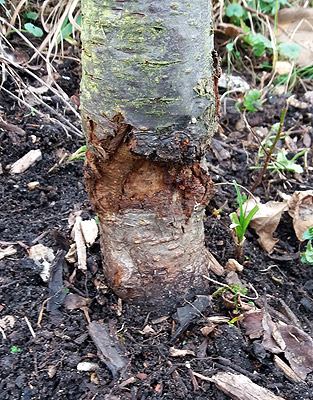
How to Save a Poorly or Dying Tree or Shrub
Plants like people can sometimes develop an illness. We may be able to identify this and treat it, though often it's not obvious what the cause is.
We can still take measures to save the unwell tree or shrub, and the good news is that with correct and timely action and a little luck it is quite possible to help the plant get over the illness and live healthily afterwards.
Helping your plant survive an infection
This applies if your plant has previously been healthy and has already grown to a good size for a couple of years or more,
if your plant is unhappy because it's in the wrong place (including climate zone) only moving it or changing the immediate environment will work - see further down the page.A specific diagnosis of the problem is not always necessary for you to help the plant heal, all the better if you can and then find if there is a treatment of course, but more often the cause is an unidentified fungal or bacterial infection.
Plant medicine is not hugely well developed and we can't take plants to hospital, so the way to deal with the plant is the way that humans dealt with most diseases before the 19th century which is the equivalent of bed-rest and making life easier for them, reducing stress to allow them to heal themselves.
1 - Check for damage
Assuming you've eliminated obvious problems such as insects feeding on your plant, the next step is to look for less obvious damage, in particular to the bark.
You're looking for places where the bark is unhealthy, it may be thin or have holes, scars or be missing altogether in a patch over the underlying wood. It is through such damaged bark that infections can enter, a small hole at the surface can lead to a longer and much larger region of infection internally. If you find such a thing then cut the damage out with a sharp knife or secateur blade, or if not possible, cut the whole branch off to a healthy region where the infection has not reached, you may need to be quite brutal, if disease reaches the main trunk it can spread all around the plant with fatal consequences.
In particular check the base of the trunk where it meets the ground as this is where fungal rot can attack the plant, gently dig down with your fingers or a short wooden stick if all is not well above ground (metal tools can cause further damage). If you do find something wrong here it's not good news, but dig down to expose the whole of the affected area so it isn't covered by soil, leaves or anything that could keep it damp. Exposing the wound to the air will help it dry out and heal.
Damage to a young damson tree just above soil level caused by an infection possibly following a hit from a lawnmower or strimmer. The problem became apparent as the trunk began to weep a clear brown sticky liquid from higher up.
This region was covered by a rabbit guard which kept it damp and accumulated dust and detritus. A fence around the wider area meant that rabbits were no longer a problem so the guard was removed and the trunk cleaned. The ground around the tree was weeded and a slow release fertiliser watered in
This picture is from about a year after the initial actions were taken, things are looking much better, no further weeping from the trunk but still not full recovery, so the ground will continue to be weeded and a liquid fertiliser will be give 2-3 times in the coming season.
Update - The tree recovered and now 3 years later is back in good health with the wound healed.
2 - Clear the base of other plants, loosen or remove ties and add mulch
Clear an area around the base of the trunk to at least a radius of 30cm (1ft), remove any weeds, grass and other plants, so there is a circle of bare soil, cover this with a thick layer of mulch, though NOT immediately next to the trunk so it can breathe. If the plant still has an original support tie that is constricting the trunk, loosen it or remove it completely.
3 - Give the plant a feed
A full watering can, 10L or 2 gallons of a suitably diluted general liquid feed.
4 - Water regularly if there's no rain
A full watering can worth once a week in dry periods or if there's only a sprinkle. Not if the problem is that the soil is too wet though.
5- Clear nearby competing plants
Your plant may have become overshadowed by other larger plants and isn't getting enough light, which plant do you want the most?
6 - Keep checking
...and repeat the steps above if necessary until you see an improvement and then for another 6 months at least, or the next growing season.
Other than disease plants of all sizes can struggle and appear ill for a number of reasons.
A common reason is a lack of water during a prolonged drought, if this is the reason it should be pretty obvious. Give the plant a BIG drink, at least 2 buckets of water and add a mulch around the base, though don't pile it up against the trunk. Repeat the watering weekly as long as the drought continues.

Check for a pest infestation. Look closely at the leaves, twigs and trunk, are there aphids, mealy bugs or anything else attacking the plant? If so then a suitable pesticide should do the trick whether out of a bottle of chemical concentrate or a more organic approach.
Another common reason that plants struggle is they are planted in the wrong place, often in too shady a spot so they don't get enough light, sometimes in too small a container and sometimes, though less obviously, in the wrong sort of soil. Acid-lovers such as Azaleas, heathers and Rhododendrons bought in flower at the garden centre and then planted in a non-acid soil are common victims here.
One of the commonest mis-plantings is too close to a large and mature tree or hedge which completely out-competes your latest introduction, the only answer is to move it away.
Sometimes however there is nothing obviously attacking the plant, it may have paler leaves than normal, a relative lack of leaves, limp leaves or damaged areas to the bark on the trunk or branches. It may stop flowering or growing or otherwise look less healthy than it did previously for no apparent reason.
The reason will most probably be that it has an infection, whether bacterial, viral or fungal and like people when we get some nondescript infection, the plant starts to have a hard time.
Q. I Was left a plum tree by my father which I planted 4 years ago I don't know a lot about plum trees but this year I had fruit grow which weren't very big or looked edible but the tree has grown to about 12 foot and has a thin trunk which bends over could you tell me if it needs pruning or trimming as I haven't got a clue and it is important to me that I look after it as best as I can your help would be greatly appreciated.
A. Difficult to say really without seeing it. It sounds like it's not happy where it is planted, is it in the shade, poor soil conditions? getting a lot of competition?
What variety of plum is it? Could it be a damson tree? damsons are small and used in cooking. Sounds odd that it's bending over.
So, what to do? Clear the ground around the base about 2 feet in radius and apply a thick mulch of garden compost. If it needs supporting, then 3 short stakes with long ties each about 2 feet from the trunk and tied quite high up would work or a single 6 foot tall post next to the trunk, but this might damage the roots if you dig or hammer it in.
A tree that in that condition and 12 foot tall isn't guaranteed to become normal. It's either in the wrong place or it wasn't staked correctly when it was developing. I assume it has a sentimental significance, so it's worth trying what I've suggested, but if it didn't I'd be considering replacing or risking moving it to a more advantageous position - a lot of work and no guarantee of success, winter is the best time if you decide to try this.
Postscript:
I thought I should give you some feed back on the advice you gave me last year.
As advised by you, I cleared the grass for about 2 feet
from the trunk and gave it a good dose of potash last summer.
In the autumn I gave it a good amount of mulch ( rotted
compost heap material) and followed up with another potash
feed in the spring. The results have been tremendous with
a big crop this year, although the size of the plums has
been small (probably due to the real lack of rain here).
So all in all a very satisfactory result. Many thanks
for the advice.
Copyright 2000 - present. All Rights Reserved | Privacy Policy Statement

